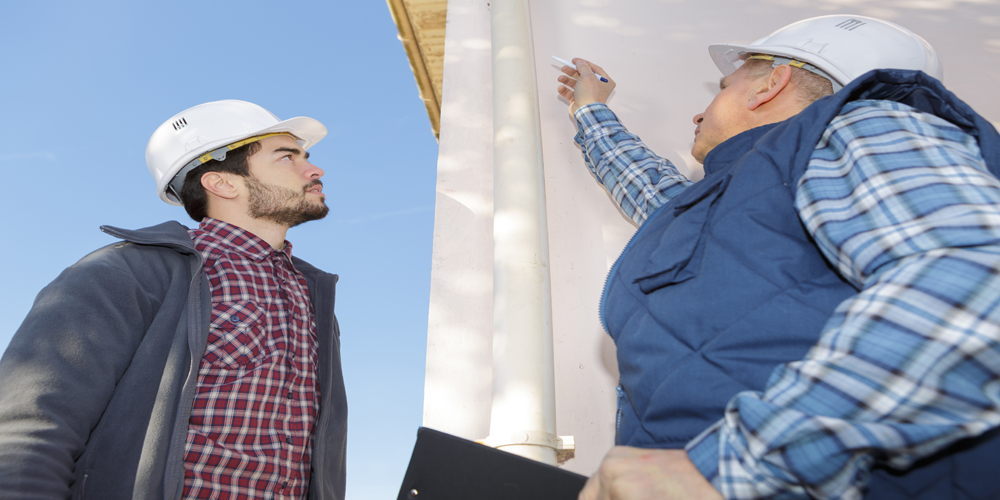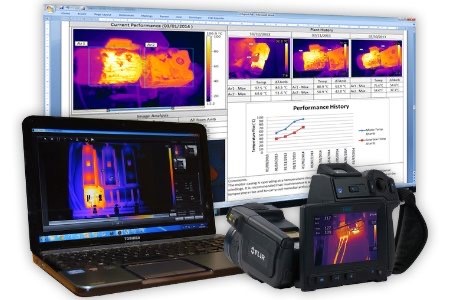
Thermal Imaging on Commercial Buildings
The need for thermal imaging on Commercial Buildings
Thermal imaging is the best way to assess continuity of insulation once the building fabric is complete on commercial buildings. It is also a very effective method of locating air leakage paths in a completed building.
This article discusses the legal requirements in Building Regulations and also the availability of BREEAM credits for thermal imaging, as well as England & Wales Building Regulations and supporting guidance, specifically Part L (Conservation of Fuel and Power).

At the time of writing this publication, it was not known what form these would take. Building Regulations for England and Wales require that reasonable provision shall be made for the conservation of fuel and power in buildings by… limiting heat gains and losses… through thermal elements and other parts of the building fabric. This requirement is supported by guidance in four Approved Documents:
- Approved Document L1A – New Dwellings
- Approved Document L1B – Work in Existing Dwellings
- Approved Document L2A – New Non-Dwellings
- Approved Document L2B – Work in Existing Non-Dwellings
The above documents highlight the importance of thermal imaging for investigating the thermal performance of the building envelope. The four Approved Documents also provide the following guidance: “The building fabric should be constructed so that there are no reasonably avoidable thermal bridges in the insulation layers caused by gaps within the various elements, at the joints between elements, and at the edges of elements such as those around window and door openings”.
In the case of new dwelling and/or commercial buildings, linear transmittance values for the specific construction details used are fed into the CO2 emissions calculations required by Building Regulations Part L. Preference is given to accredited construction details by imposing a penalty in the CO2 emissions calculations for non-accredited details.
Also in the case of new buildings, it is a requirement to carry out airtightness testing – once the designed air leakage rate has been established and once completed the measured air permeability is fed into the CO2 emissions calculations. In the case of existing buildings, the guidance on continuity of insulation only applies where new thermal elements (for example walls, floors, and roofs.) are provided, for example when an extension is built. There are no requirements for CO2 emissions calculations or airtightness testing on existing buildings; although this may be a client requirement.

Regulation 43 of the Building Regulations for England and Wales requires air pressure testing to be carried out on all new buildings, in order to be satisfied that provision has been made to limit heat gains and losses through the building fabric. This includes heat transfer by air leakage. For new dwellings, Building Regulations Approved Document L1A [1] requires air pressure tests to be carried out on a representative sample of dwellings – although this has since been changed to all dwellings.
Approved Document L2A relating to new buildings other than dwellings requires an air leakage test to be carried out on all buildings subject to the regulations in accordance with the standard test method.
It is worth noting that if a thermographic survey is being undertaken as part of a BREEAM (Building Research Establishment Environmental Assessment Method) assessment, the thermographer must be qualified to a minimum Level 2 – all our APT’s thermographic engineers hold a minimum of Level 2 certification. We use the latest Flir high resolution thermal imaging cameras for all our surveys. Thermal imaging is the only practical way of checking that thermal insulation hidden in the structure meets the requirements for continuity of insulation.
More details for both our thermal imaging and air tightness testing services can be found on our website at www.aptsoundtesting.co.uk.
Please visit us at for our thermal imaging guide and checklist and here for our air tightness testing guide and checklist.
If you would like more information on our Themographic Building Inspection service, please contact us at info@aptsoundtesting.co.uk or call us on: 01525 303905